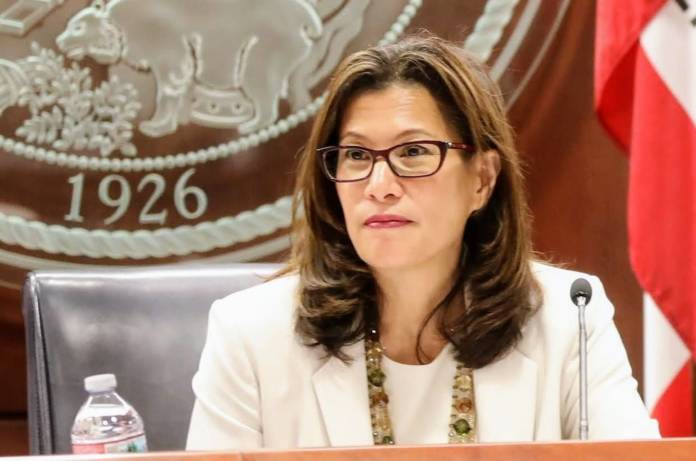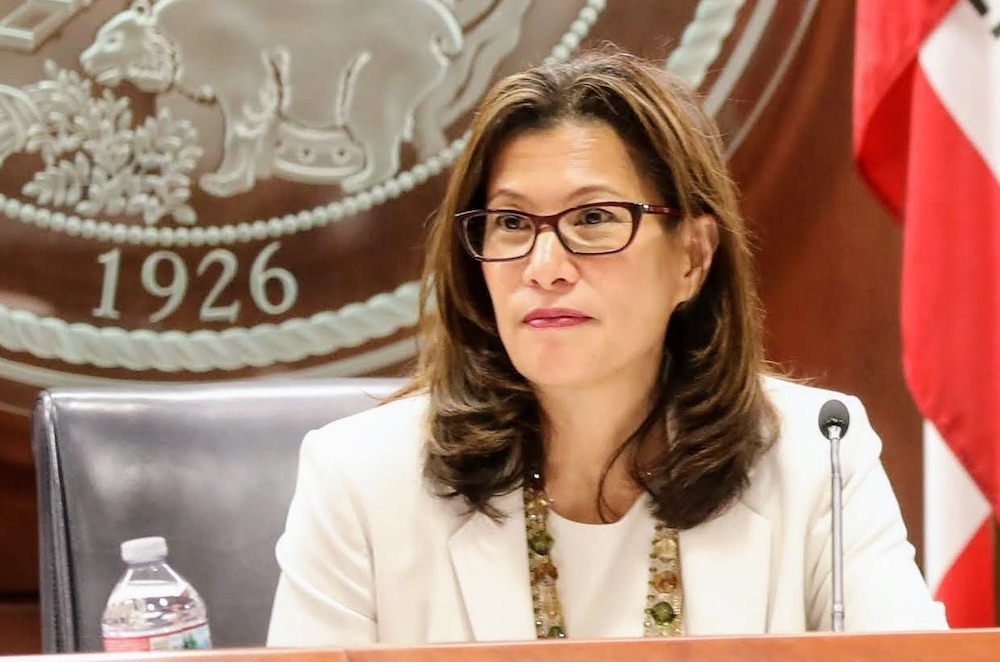
At a time when local authorities are working hard to reduce the number of inmates in county jails to reduce the spread of COVID-19, the organization that runs the California courts has just taken a big step in the opposite direction.
The California Judicial Council, in a hurried Saturday meeting, decided to extend the deadlines for criminal hearings and trials, forcing people who have been arrested but not convicted of a crime to be locked up for as much as three additional months before they can have a judge hear their case.

The council issued a report on Friday and allowed only one day for comments. In the 55-minute virtual meeting Saturday, the panel – made up of Superior Court judges and chaired by the chief justice of the state Supreme Court – decided that the needs of the judges and their staff outweighs the Constitutional rights of defendants.
It is abundantly clear that measures must be immediately taken to protect the health and safety of the public, of the staff and inmates in local detention facilities, law enforcement, court employees, attorneys, and judges. The courts must balance public safety and health concerns of everyone involved in court proceedings with the constitutional rights of accused defendants.
The Judicial Council talked about the possibility of using technology to do virtual hearings; that’s something that the council itself was able to do, and that many local government agencies have already implemented.
But instead of immediately moving in that direction, the panel decided on new rules that:
-
For arraignments, extends time period from 48 hours to 7 days. Arraignment occurs after police arrest someone and prosecutors charge him with a crime. If the person cannot hire an attorney, a judge appoints a lawyer – usually a Public Defender — to represent the person and sets bail if it hasn’t already been set or releases him on his own recognizance. The person also can enter a plea, which starts the speedy trial clock ticking.
-
For in-custody preliminary hearings, extends time period from 10 court days to 30 court days. A preliminary hearing, also called a preliminary examination or probable cause hearing, is when a judge hears some of the evidence against a person and decides whether the case should continue to trial. Under normal rules, if the preliminary hearing isn’t conducted within 10 days, the person must be released.
-
For in-custody misdemeanors, extends time period for jury trial from 30 calendar days to 60 days. Under normal rules, if the trial doesn’t start within 30 days, the case must be dismissed.
-
For felonies, extends time period for jury trial from 60 calendar days to 90 days.After preliminary hearing ends, prosecutors have 15 days to file the next stage of prosecution, which is called the “information.” After the defendant enters a plea to that, he can invoke his speedy trial rights.
What this means, Alameda County Public Defender Brendon Woods said, is that due process and defendants’ rights have been damaged.
“This is a dark day for justice,” Woods said. “At [Saturday’s] hearing they talked a lot about protecting the rights of Californians. But my biggest concern is that it was not true for the people we represent — the poorest people, black and brown people, locked in cages. I understand this is a national crisis, but we went from 0 to 120 miles an hour in one moment. If we’re going to go down this road of denying people their speedy trial rights, then we should talk about releasing them on no-cash bail or some other form of release, such as electronic monitoring. …
“No one charged with misdemeanors, property crimes, failures to appear nor nonviolent and low-level felonies should be in jail right now. In addition, people serving jail time for those offenses – or serving short sentences in connection with serious cases – should be released.”
I couldn’t reach anyone at the Judicial Council for comment this weekend. I called the office, but the person who answered the phone couldn’t comment. I emailed the press person, Blaine Corren, and as soon as he gets back to me I will update.
UPDATE: Corren sent me the following today:
California is in a State of Emergency and the authority that the Governor has delegated to the Chief Justice and the Judicial Council last Friday is temporary. On Saturday they approved temporary emergency measures to help courts serve their constituents during the pandemic. The courts have been asked to balance legitimate health and safety concerns with litigants’ civil and constitutional rights and liberties, and are doing their best during this State of Emergency to strike that balance.In addition to the action taken Mar. 28 to extend certain deadlines, the Chief Justice in her Mar. 20 advisory to the courts, urged court officials to consider the following measures in criminal cases:
Lower bail amounts significantly for the duration of the coronavirus emergency, including lowering the bail amount to $0 for many lower level offenses.
Consider a defendant’s existing health conditions, and conditions existing at the anticipated place of confinement, in setting conditions of custody for adult or juvenile defendants.
Identify detainees with less than 60 days in custody to permit early release, with or without supervision or community-based treatment.
Determine the nature of supervision violations that will warrant detention in county jail, or “flash incarceration,” to drastically reduce or eliminate its use during the current health crisis.
Prioritize arraignments and preliminary hearings for in-custody defendants, and the issuance of restraining orders.
Prioritize juvenile dependency detention hearings to ensure they are held within the time required by state and federal law.
Allow liberal use of telephone or video appearance by counsel and defendant for routine or non-critical criminal matters.
And to this last point about remote appearances, part of the Mar. 28 council action was to try to help courts keep essential proceedings moving in a safe manner, which can include to “Make use of technology, when possible, to conduct judicial proceedings and court operations remotely.” But even though a majority of superior courts are using some form of remote proceedings, courts are at varying levels of technology readiness as are their local justice system partners, including local law enforcement, DAs, PDs, as well as litigants and the public depending on where they are in the state (e.g. broadband).
But there’s no question that this means more people who have been arrested will spend more time behind bars, in close confinement, where they are likely to be most at risk for a potentially deadly disease.
Mano Raju, San Francisco public defender, noted:
Saturday’s decision is so disturbing because it undermines Due Process and people’s rights.
Arraignments are a stage of the process where defense teams are able to bring to the court’s attention a fuller picture of those accused, show their connection to community, demonstrate why they are not a threat to public safety, and argue for release. At a preliminary hearing, the defense is able to flush out a fuller picture of the facts than those contained in a police report in a way that can lead to a dismissal of or reduction in charges, release from custody, or a resolution of the case. Until these proceedings happen, members of our community languish in custody with only a one-sided version of the facts and a dehumanized perception of who they are.
Delaying these proceedings is delaying justice and an opportunity for judges to make informed decisions swiftly — decisions that should factor into the current public health pandemic that is affecting all of us.
I realize that judges and court staff are also at risk – as are the lawyer who prosecute and defend people accused of crimes. But I don’t get why every other branch of government can do its work by Zoom, but the judges can’t.
“This is national news and nobody is covering it,” Alameda Deputy Public Defender Jeff Chorney told me. “It is a disaster in the making.”
Chorney said the new ruling was particularly frustrating because his office, the Alameda County sheriff, and the prosecutors were making a lot of progress in reducing the jail population.
“Things have been going pretty well,” he said. “More than 300 people have been released because all of the stakeholders agreed.”
Now this.
Of course, the problem is that nobody can really challenge the new rules in court, since the judges made the ruling, with the support and assent of Chief Justice Tani Cantil-Sakauye.
But the right to a speed trial is enshrined in the Constitition, and the California Public Defenders Association says the order may be illegal:
These actions were taken without and regard for, or any mention of, the extensive written objections that CPDA and many other criminal defense and civil liberties groups submitted to the Chief Justice and the Judicial Council in response to their request last night.
Despite these orders having been made please remember that in a republic federal law is supreme over state law.
If an individual is arrested in this country, the individual is entitled to have a judge determine whether there is probable cause to believe the person committed a crime.County of Riverside v. McLaughlin, 500 U.S. 44 (1991), is a United States Supreme Court case holding a suspect arrested without a warrant must be brought into court to determine if there is probable cause to hold the suspect in custody. Suspects must generally be granted a probable cause determination within 48 hours of arrest.
It is the opinion of CPDA that the Chief Justice’s order cannot suspend this United States Supreme Court precedent.
I wonder if the federal judges are working.

